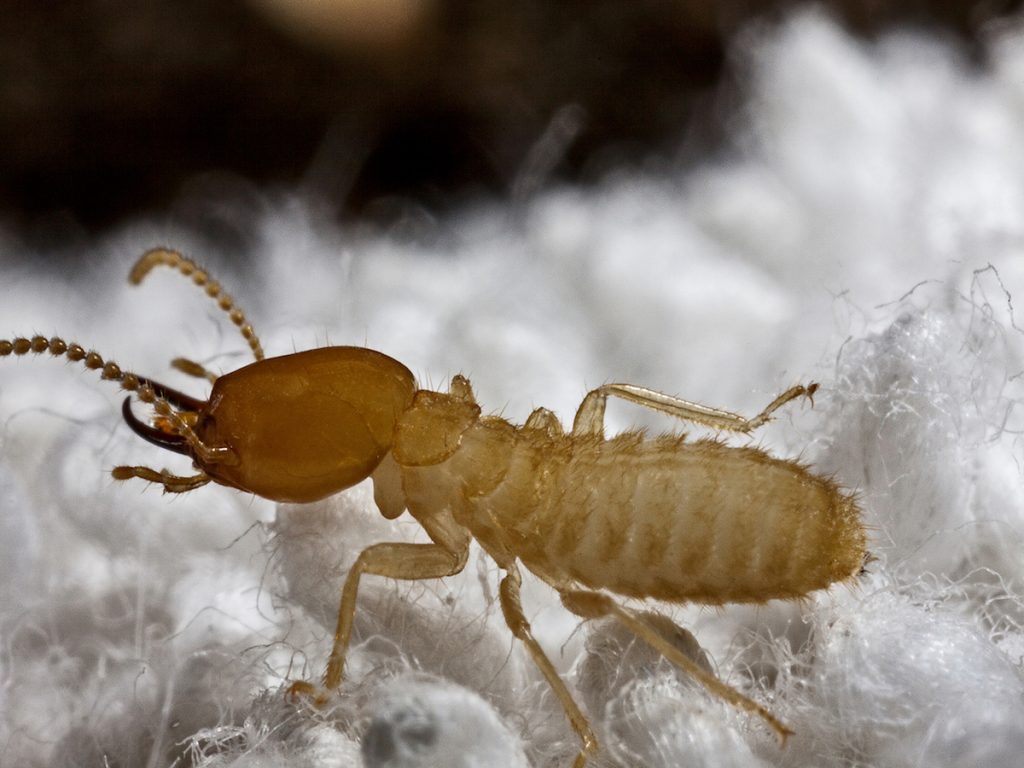Termites can cause serious damage to your home, but with the right knowledge, you can protect your property from these pests. This article will provide an introduction to termites in California, including how to identify them, prevent infestations, and repair any damage they may have caused.
Types of Termites in California
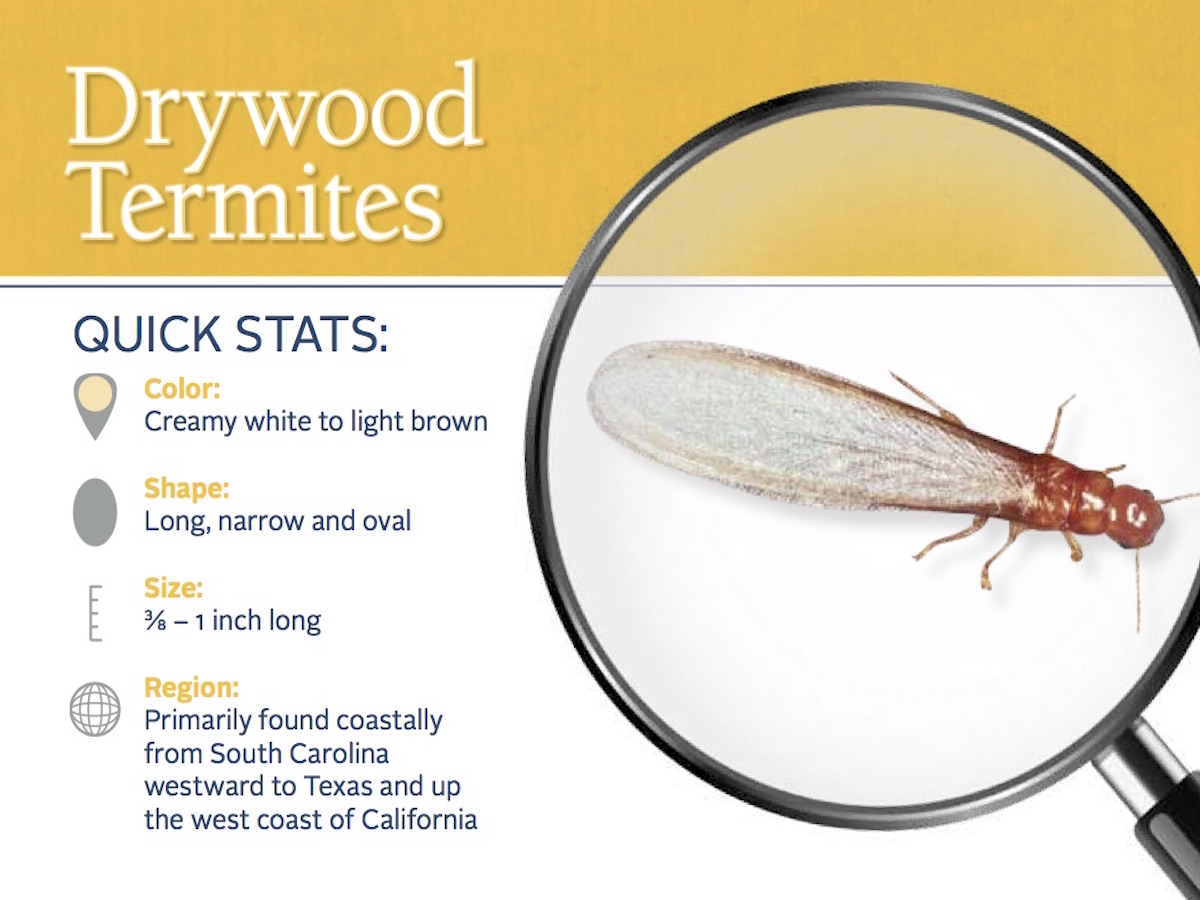
1 Drywood Termites
Drywood termites are found throughout California. They usually enter homes through wood that has been exposed to the elements, such as window and door frames, roof eaves, and siding. The wood is then eaten from the inside out, leaving behind sawdust and tiny holes in the wood. Drywood termites are also known to tunnel through wood to create galleries and chambers.
2 Subterranean Termites
Subterranean termites are the most common type of termites in California. They typically live in the soil and build underground tunnels to enter homes. They are attracted to moisture and can be found in areas with high humidity, such as bathrooms, kitchens, and basements. Subterranean termites can cause extensive damage to wooden structures and can quickly spread to other parts of the home if left untreated.
Prevalence of Termites in California
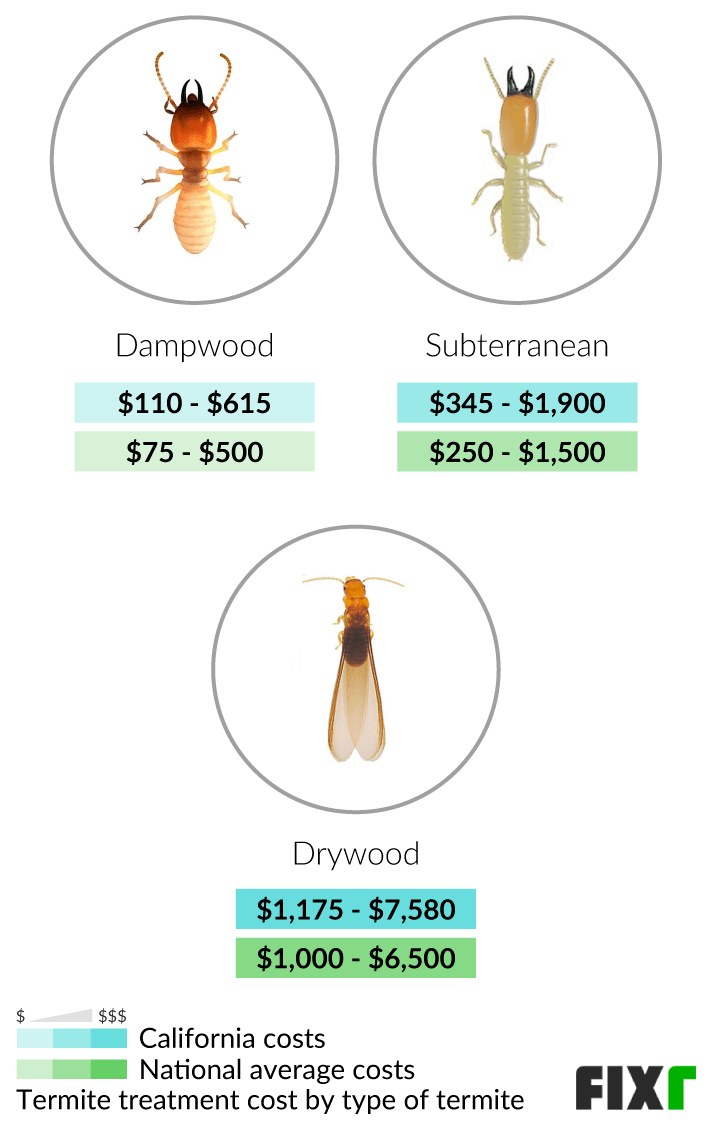
California is home to many species of termites, with the most common being subterranean termites. These termites are found throughout the state, but are most prevalent in the central and southern parts of the state. Subterranean termites live in the soil and build underground tunnels to gain access to wood and other cellulose materials. They are also known to infest homes, businesses, and other structures.
Drywood termites are another common species found in California. These termites live inside wood, and can be found in the attics and walls of buildings throughout the state. Drywood termites do not need soil contact, and can infest wood that is not in direct contact with the soil.
Formosan termites are a more recent arrival to California and have been found in the coastal and southern parts of the state. These termites are highly destructive and can cause significant damage to homes and other structures.
| Termite | Location |
|---|---|
| Subterranean | Central & Southern California |
| Drywood | Throughout California |
| Formosan | Coastal & Southern California |
Termite damage can be costly, and it is important to take steps to prevent infestations. Homeowners should inspect their properties for signs of termite activity, and contact a pest control professional if any evidence of termites is found.
Habits and Behaviors of California Termites
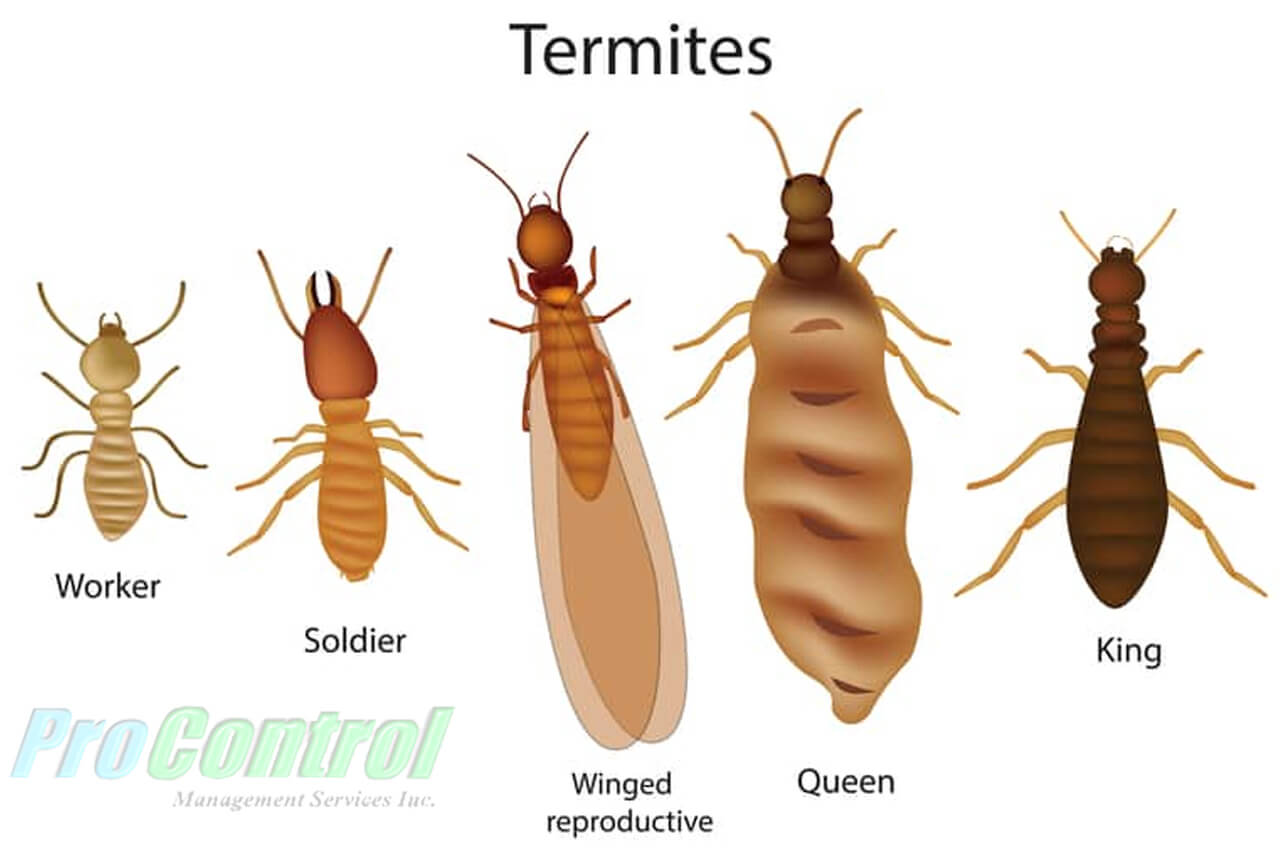
- California termites are most active during the warm spring and summer months.
- The majority of California termites live in the soil and feed on dead plants, wood, and other organic material.
- California termites are social insects, living in colonies that contain thousands of individuals.
- The colony is usually divided into three groups: workers, soldiers, and reproductives.
- Workers are responsible for gathering food, maintaining the nest, and caring for young.
- Soldiers are responsible for defending the colony from predators.
- Reproductives are responsible for creating new colonies.
- California termites are most active at night, when they search for food, construct tunnels, and feed on wood.
- California termites can be identified by their long, white bodies, straight antennae, and wings that are twice as long as their body.
- California termites will cause damage to wooden structures, such as houses, furniture, and fences.
Signs of a California Termite Infestation
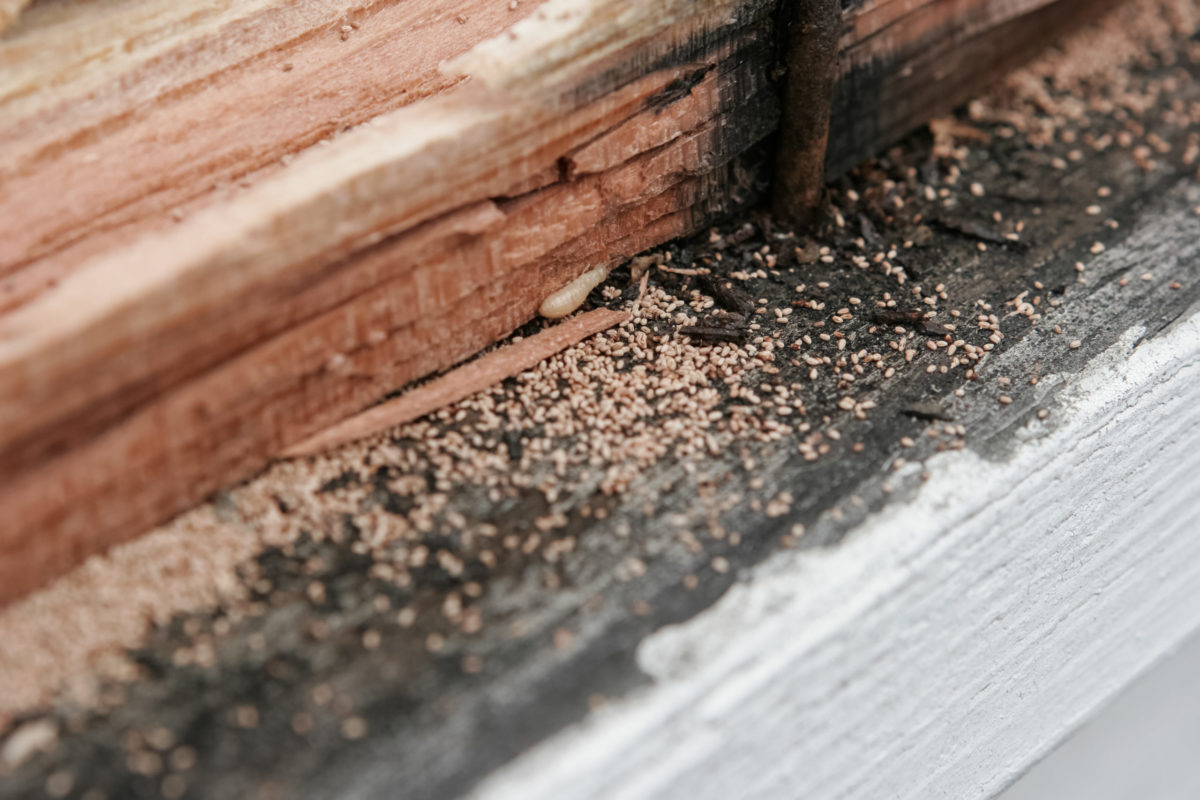
- Mud tubes along the foundation walls, or in the crawl space.
- Discarded wings near doors and windows.
- Small holes in wood and other damage to wood such as buckling and blisters.
- Musty odors.
- Visible swarms of termites.
- Visible termite droppings.
- Cracks in plaster ceilings.
- Soft or spongy floors.
- Paint that is bubbling, blistering, or peeling.
Treatments for California Termites
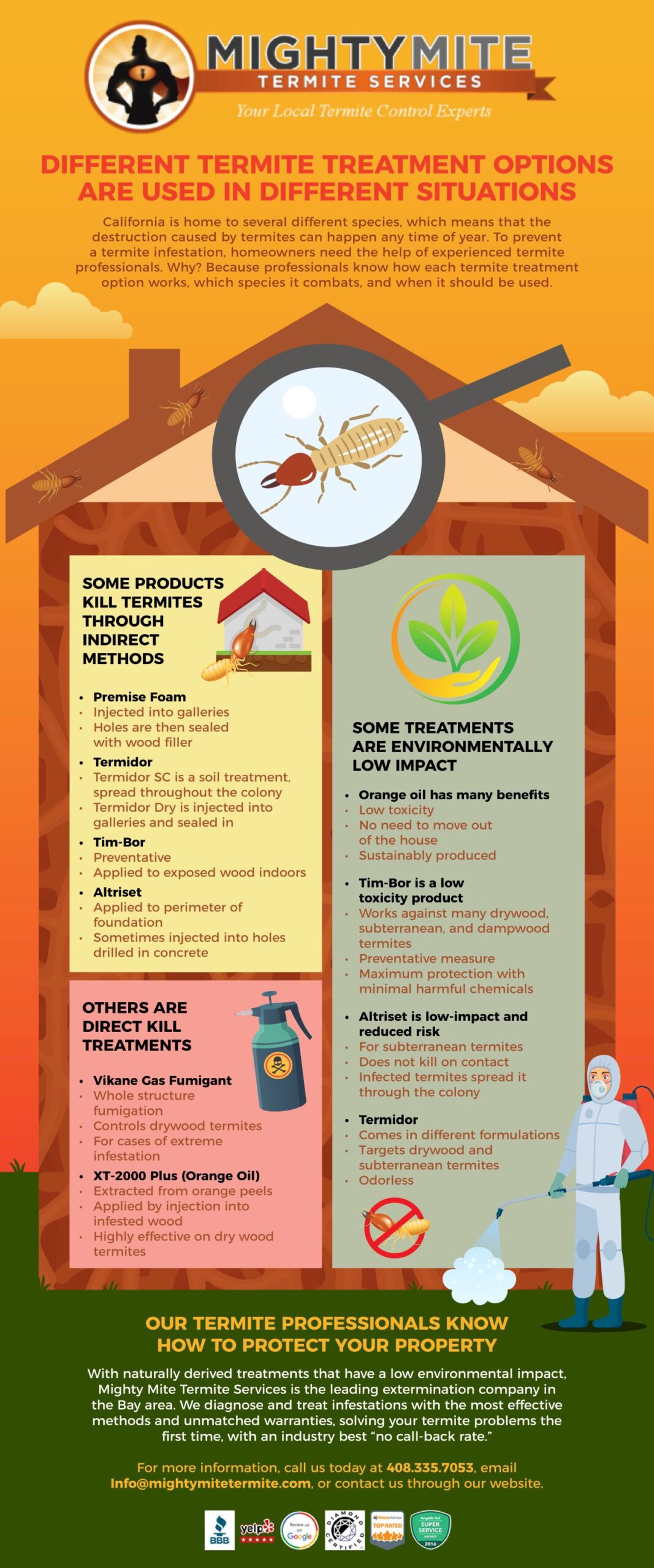
Termite treatments vary depending on the type of infestation and the severity of the damage. In California, the most common type of termite is the subterranean termite, which requires specific treatments. Generally, the most effective treatments involve chemical barriers or baits.
Chemical barriers are a common treatment for California termites. This type of treatment involves applying a liquid termiticide around the foundation of the home or structure. The termiticide creates a barrier between the termites and the structure, keeping them from entering and causing damage. This type of treatment must be repeated every few years for optimal effectiveness.
Baiting systems are another type of termite treatment. Baiting systems involve placing several bait stations around the foundation of the home. The bait stations contain a bait that the termites are attracted to. The termites consume the bait and the active ingredient in the bait is transferred to the rest of the colony, killing them. Baiting systems must be monitored regularly to ensure effectiveness.
In some cases, California termite treatments may include fumigation. Fumigation involves completely sealing off the home or structure and filling it with a gas that is lethal to termites. This type of treatment is used when the termite infestation is severe and other treatments are not effective.
No matter which type of treatment is used, it is important to hire an experienced professional to ensure the job is done properly. Professional exterminators are trained to identify and treat termite infestations, and they have access to the latest products and technologies to ensure the best results.
Preventing California Termites
One of the most important steps in preventing a potential termite infestation in California is to make sure that your home is free of any excess moisture. This includes fixing any broken pipes, gutters and drains, and making sure that areas near the foundation of your home are not leaking. It is also important to make sure that wood debris and piles of leaves are cleared away from the home.
Other preventative steps include making sure that wood products are not touching the ground, that wood siding and trim is properly sealed, and that any wood that is in contact with the soil is pressure-treated. It is also important to regularly inspect the home for any signs of termite infestation, such as mud tubes, wood damage, or swarms of winged insects.
If you suspect that you do have termites, it is important to contact a professional pest control company to assess the situation. Professional pest control companies can provide treatment options to eliminate the termites and prevent further infestation.
Cost of Treating Termites in California
- Tenting and Fumigation: Generally, the cost of tenting and fumigation in California ranges from $1,500 to $3,500.
- Baiting System: The cost of installing a baiting system in California ranges from $1,000 to $2,000.
- Liquid Treatment: The cost of a liquid treatment in California ranges from $500 to $1,500.
- Heat Treatment: The cost of a heat treatment in California ranges from $500 to $1,500.
- Vikane Gas: The cost of a Vikane gas treatment in California ranges from $1,000 to $2,000.
Frequently Asked Questions
What type of termites are most common in California?
Subterranean termites are the most common type of termite found in California. Native to the state, they live in colonies in the ground and build mud tubes to feed on wood and other cellulose-based materials. Drywood termites are also found in California, living primarily in dry, undecayed wood in attics, roofs and furniture. For both types of termites, colonies can grow to several hundred thousand members, leading to significant damage to homes, furniture and other wooden structures.
What are the warning signs of a drywood termite infestation in California?
Signs of a drywood termite infestation in California include wood damage, discarded wings, and fecal pellets. Drywood termites create galleries within the wood, leaving hollowed out sections. They also create exit holes so they can discard their wings after they become adults. These exit holes are typically small and round. Fecal pellets are small, six-sided droppings that accumulate in the exit holes or within the galleries.
What are the most effective methods for preventing termites in Southern California?
The most effective methods for preventing termites in Southern California include removing wood debris from around the property, keeping the soil dry, sealing off entry points, and maintaining good ventilation. Additionally, it is important to keep the foundation and walls of the building in good condition and properly treated with insecticides. Regular inspections by a professional pest control company can also help to identify any existing infestations and take the necessary steps to prevent further damage.
What kind of damage can termites do in CA?
Termites in California can cause significant damage to structures and wooden items. They feed on cellulose and can cause damage to buildings, furniture, books, and other items made of wood and other cellulose-based materials. They can also damage insulation, paper, and even swimming pool liners and filtration systems. In extreme cases, termite damage can cause structural damage to buildings and homes and may even require costly repairs.
Are there any natural ways to get rid of termites in California?
Natural ways of controlling termites in California include the use of natural enemies such as nematodes, fungi, and predatory insects. Nematodes, particularly entomopathogenic nematodes, are microscopic, non-segmented roundworms that can be used as biological control agents against termites. Fungi such as Metarhizium anisopliae, Beauveria bassiana, and Paecilomyces lilacinus also attack subterranean termites and can be used as a form of control. Predatory insects such as ants and beetles can also help control termite populations. Additionally, physical barriers such as vinyl barriers and metal flashing can be used to prevent termites from entering buildings.
Conclusion
Termites can cause serious damage to homes in California if left untreated. It is important to identify the signs of termite infestation and take appropriate steps to prevent and treat termite damage. Homeowners can use a combination of methods to prevent termite damage, such as regular inspections, sealing cracks and crevices, keeping wood debris away from the home, and applying chemical treatments and baits to the affected areas. Professional pest control services can also be hired to identify and eliminate termite infestations.

